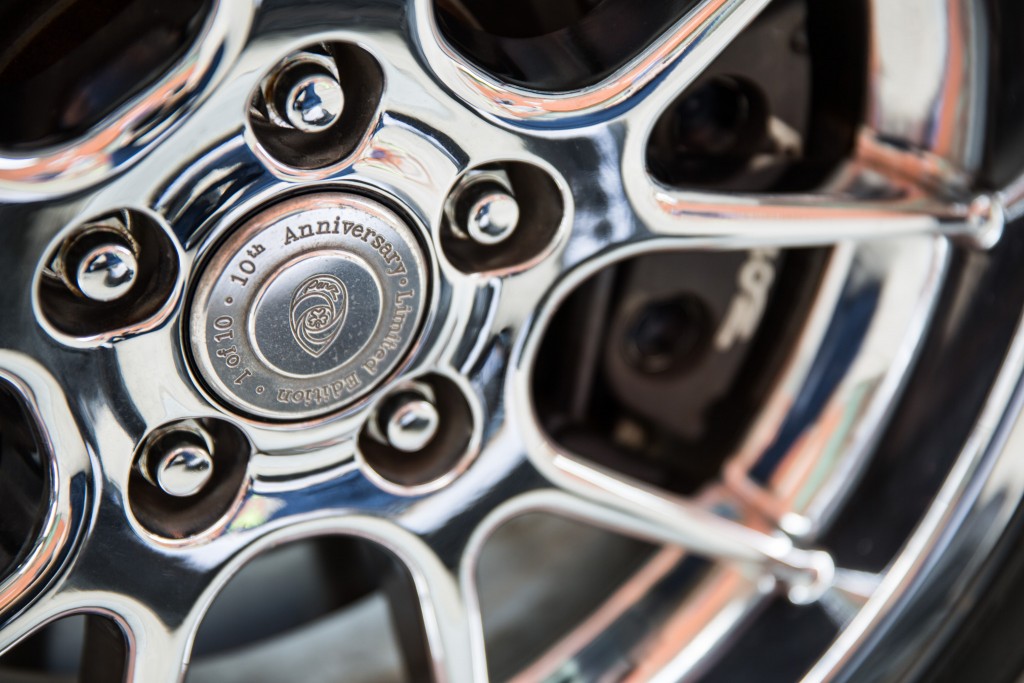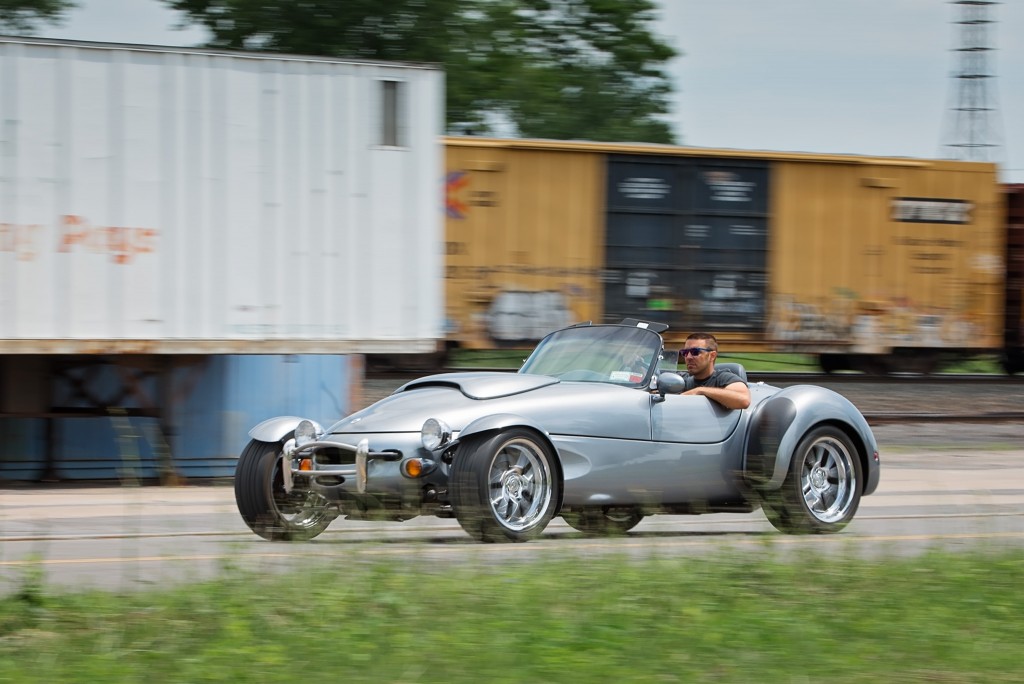I remember the first time I saw a Panoz. It was in a May 1998 Motor Trend Magazine article titled: Viva Velocity. The Panoz was the odd one out within a group of supercars of the time, such as a new Dodge Viper GTS, Corvette, and the Lotus Esprit Twin Turbo.
While these monsters were setting new production car top speed records and quarter mile times, the Panoz was happily putzing along mid-pack. That’s what I loved about it. It was different without trying hard.
The Panoz Roadster isn’t about being the fastest. It isn’t about top speeds or quarter mile times. The Roadster allows the occupants to enjoy a cruise with the top back and the sunshine beaming down. With a snap-on top and plastic zip-in side windows this car is not recommended for foul weather.
 When out driving the car, passerby may ask “is this a Prowler?” While the Prowler may have similar front fenders and the pouncing stance if we squint hard enough…the Prowler is very tank-like and slab sided. Let us also not forget that the Prowler has a tow hitch.
When out driving the car, passerby may ask “is this a Prowler?” While the Prowler may have similar front fenders and the pouncing stance if we squint hard enough…the Prowler is very tank-like and slab sided. Let us also not forget that the Prowler has a tow hitch.
The lines of the Panoz flow with an elegance and there are a wide variety of styling influences from the Cobra and British Roadsters of the past.
This particular car is from 1999. But if I did not mention the year, would someone be able to guess it is now a sixteen year old vehicle?
Don Panoz started out in pharmaceuticals and helped to develop what is known as the transdermal patch. This is essentially the nicotine patch, but can be used in other applications as well. Don then helped fund the beginnings of the Panoz Auto Development company helmed by his son Dan. The Panoz family also founded the American Le Mans series and had some success and competition with their own race car versus the other major auto factories and entrants.
 The factory would create their own race cars, but also two vehicles which could be used on the road for customer use. The Panoz Roadster and the Esperante would utilize Ford Mustang components to keep development costs down. A side benefit of using established technology would also be the ease of maintenance and ownership.
The factory would create their own race cars, but also two vehicles which could be used on the road for customer use. The Panoz Roadster and the Esperante would utilize Ford Mustang components to keep development costs down. A side benefit of using established technology would also be the ease of maintenance and ownership.
Early models of the Roadster from 1992-1995 were primarily steel frame with the classic Ford 5.0 V8 engine. Development of the vehicle continued to contain lighter weight aluminum which would assist in less mass to move around and therefore better handling. The updated aluminum 4.6 liter V8 engine from the Mustang Cobra would take the place of the 5.0. The 5 speed transmission, differential, suspension, and brake system would also be part of the installation. Due to the majority of construction coming from aluminum components and framework, the Roadster would now be dubbed the AIV or aluminum intensive vehicle.
 Production of the AIV Roadster would last from 1997 to 1999. There were 176 vehicles produced at the Braselton, Georgia factory. The final ten Roadsters sold were 10th anniversary editions. Some special and features of these ten are the titanium metallic paint, chrome BBS RK wheels, blue leather with the contrasting white stitching, numbered plaque, and signature plate under the hood too. The Roadster would take about 350 hours of by hand assembly from start to finish. Four of these final ten Roadsters had Keene Belle superchargers which would bump the horsepower levels up to about 450 horsepower. This is quite a bit of punch for a vehicle weighing in around 2,600 pounds.
Production of the AIV Roadster would last from 1997 to 1999. There were 176 vehicles produced at the Braselton, Georgia factory. The final ten Roadsters sold were 10th anniversary editions. Some special and features of these ten are the titanium metallic paint, chrome BBS RK wheels, blue leather with the contrasting white stitching, numbered plaque, and signature plate under the hood too. The Roadster would take about 350 hours of by hand assembly from start to finish. Four of these final ten Roadsters had Keene Belle superchargers which would bump the horsepower levels up to about 450 horsepower. This is quite a bit of punch for a vehicle weighing in around 2,600 pounds.
The Panoz is an amazing and unique vehicle. A Panoz is not often seen on the road due to their rarity, but when they are spotted, the sound and looks are attention grabbing. Hopefully the owners checked the weather for blue skies only before heading out for the day.
Story by Brian Coupe
Photos by Chris Penree & Jordan Polizzi

